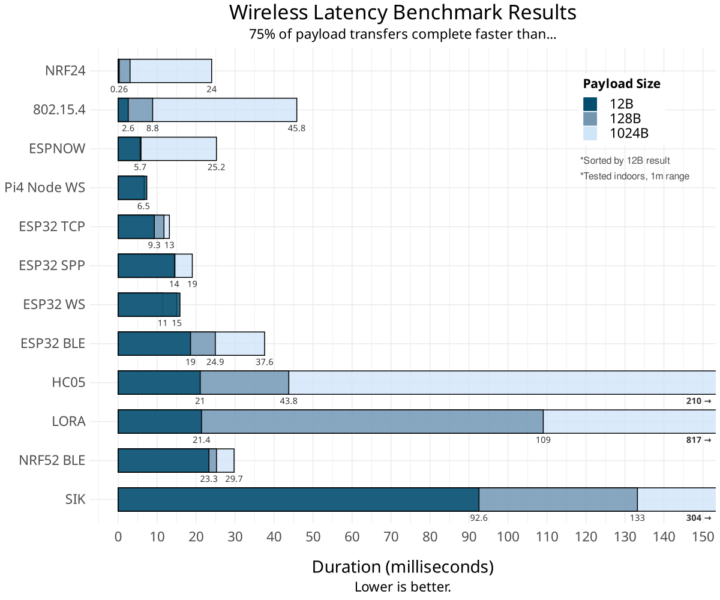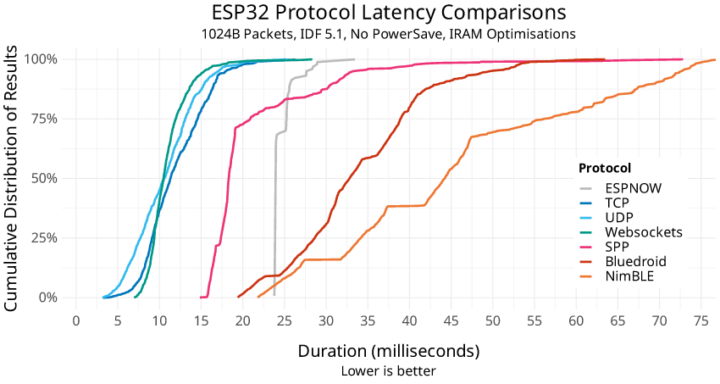If you’ve ever wondered which wireless standard may deliver the smallest lag (latency) when transmitting small packets, we’ve now gotten an answer thanks to Scott at Electric UI who benchmarked various wireless links in common MCU development boards.
More specifically the following hardware and wireless standards were tested:
- SiliconLabs 10×0-GM RF+8051 microcontroller with 240–960 MHz EZRadioPRO transceiver running SiK firmware
- HopeRF RFM95W LoRa module (on an Adafruit Breakout board) connected to an STM32F429 MCU
- Nordic Semi nRF24L01 2.4GHz transceiver module
- ESP32 board for ESP-NOW and WiFi testing is shown as ESP32 WS (WebSockets) or ESP32 TCP in the chart below. Raspberry Pi boards were also used for comparison
- ESP32-C6 board for 802.15.4 transfers (Thread)
- ESP32 and HC-05 modules for Bluetooth SPP (Serial Port Profile)
- ESP32 board with NimBLE and Bluedroid stacks and nRF52 for Bluetooth LE testing
Here are the results for 12 bytes, 128 bytes, and 1024 bytes data transfers.

nRF24 offers the lowest lag for 12-byte and 128-byte payloads with only 0.26 ms (rounded up to 300 microseconds in the main body of the article?) and 1.9 ms. That’s another story with the larger 1024-byte payload since nRF24 breaks it into multiple 32-byte packets, and instead, ESP32 TCP (WiFi) gets the upper hand here. Unsurprisingly, LoRa and SIK have really long latencies since those protocols are optimized for long-range low-power connectivity rather than fast transfers. We also learned that the Bluedroid stack has a lower latency than NimBLE on ESP32.

It’s quite tricky to measure latency between different wireless platforms since many factors have to be taken into account. For example, bare metal code will be faster than an Arduino sketch, and compilation flags may also impact performance with, for instance, the -Os flag (optimization for size) delivering better results than the -O3 flag (optimization for speed). The method to measure the lag and validate the results needs to be carefully selected and Scott goes over all those in great detail in his blog post (that’s a long read).
Via Hackaday (and somewhere on LinkedIn)

Jean-Luc started CNX Software in 2010 as a part-time endeavor, before quitting his job as a software engineering manager, and starting to write daily news, and reviews full time later in 2011.
Support CNX Software! Donate via cryptocurrencies, become a Patron on Patreon, or purchase goods on Amazon or Aliexpress




